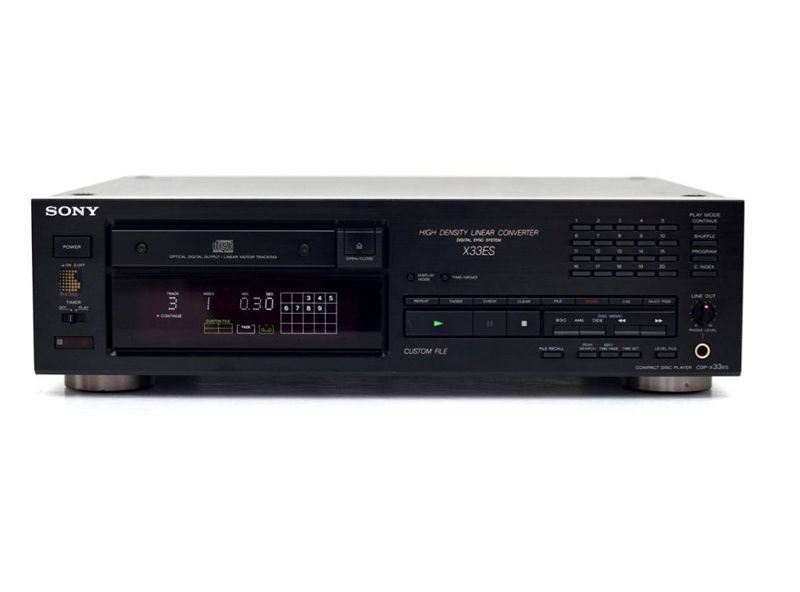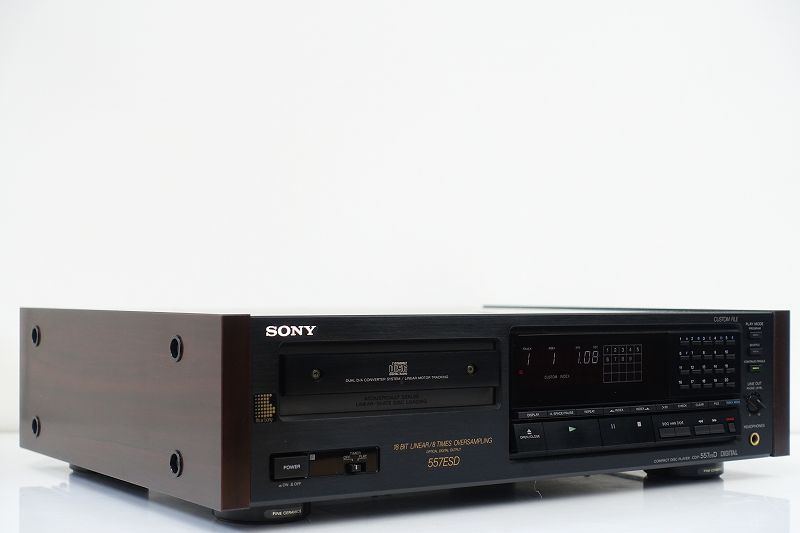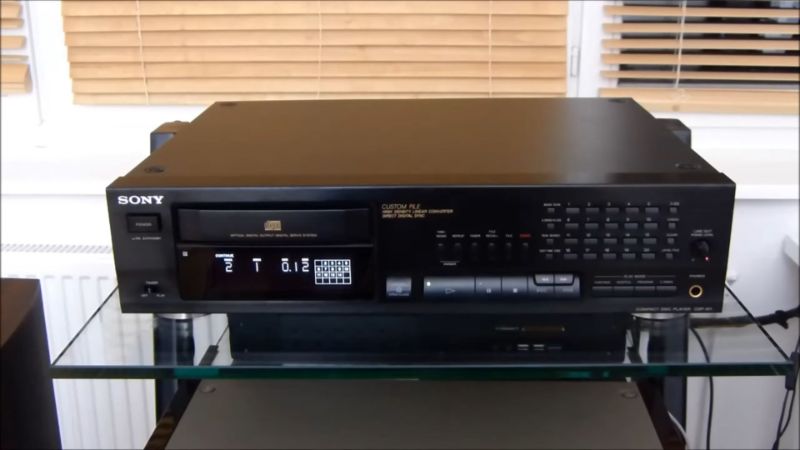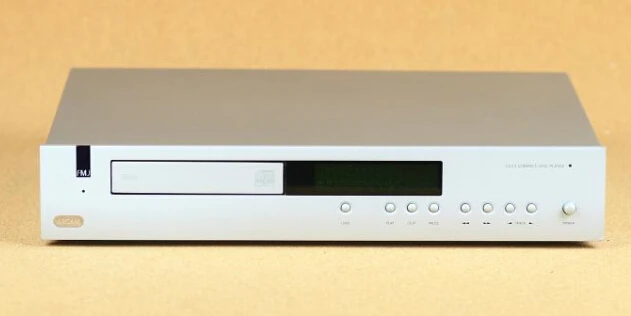Despite costing only a few hundred pounds more than its predecessor, the 2019 8300CDQ was sleeker and more complex in terms of build, finish, and functionality – plus it had MQA, which Audiolab thought was a useful new feature. This should help the player remain future-proof, but DSD playback, which is finally gaining traction among audiophiles, is probably more interesting. Many people, including me, are enamored with its sound. The 8300CDQ does really support 32-bit/384-kHz PCM and DSD playback, thus it won’t be obsolete for a long time…
Moving on to more practical issues, this machine can now play Compact Discs, thanks to the newest generation Audiolab slot-loading system, which is a far better method to play CDs than placing them on a wobbling plastic tray and seeing them whirr back into the machine. The 8300CDQ is remarkably quiet and smooth while loading discs, and it also provides quick track access. According to the manufacturer, its mechanism is designed to read weak disc surfaces better than others, and it has a digital buffer to make playback even smoother.
The previous 8200CDQ’s utilization of the cutting-edge 32-bit ESS Sabre DAC chip was one of its most striking features. It’s still rightly popular, and it’s made many more friends in the machines of other manufacturers since then. The new machine contains the most recent version, as well as circuitry that has been designed to minimize distortion as much as possible. As before, digital filters can be used to fine-tune the sound to the user’s preferences and/or the music playing. Optimal Transient, Optimal Transient XD, Optimal Transient DD, Sharp Roll Off, Slow Roll Off, and Minimum Phase are among them. According to Audiolab, four additional DSD filters have been added to this, progressively attenuating the out-of-audio band noise floor.
The machine is really beautifully built for the money, measuring 444x80x317mm and weighing 6kg; its aluminium components are securely bonded together to make the shell, and there’s a slim, somewhat basic front panel. The CD loader slot is on the left, while the dot-matrix alphanumeric display is in the center. The transport controls are to the right, followed by the menu selectors, which provide a variety of setup choices such as selecting the aforementioned filters and the default source on startup. Then there’s the volume up/down and input selector. There are RCA or balanced XLR analogue outputs on the back, as well as two TOSLINK optical and two coaxial digital inputs, one USB, a single optical and coaxial digital output, and three pairs of analogue RCA phono ins. The picture is completed by trigger sockets and a switched IEC mains input.
Using the Audiolab is a piece of cake, facilitated by the included remote control if desired. My listening was done using a CD player, a USB input for all hi-res files, and a Blu-ray player’s coaxial and digital inputs.
The Audiolab sound is unmistakable. It’s always been a little dry and clean — some describe it as accurate and uncolored. In the end, it’s a matter of personal preference, but there’s no doubt that putting on a classic 1970s rock album will result in a rendition that doesn’t continually remind you of an analogue recording. Steely Dan’s Aja, for example, was enjoyable to listen to via a CD remaster from a decade or so ago, but it seemed lighter and clearer than normal. Although there was a lot of atmosphere and texture, the instruments lacked body and the vocals lacked warmth. It seemed to work better when I switched to some throwback electro, like Nu Era’s Oscar Styles, with the Audiolab going in and extracting large quantities of detail from the mix with seemingly incredible forensic abilities. Here, the machine’s slightly analytical tendency was used to the music’s benefit rather than its detriment.
Its detail recovery is something that continues to reveal itself. It is, without a doubt, a very capable information retriever. In some ways, it was comparable to the twice-as-expensive Chord Hugo 2 when used as a DAC. It’s certainly good at eking out subtle elements of the mix; using the USB input to play a hi-res PCM file of The Buggles’ Plastic Age revealed a really detailed portrayal of all the studio effects, as well as the ability to hear different strands of the music – i.e. different tracks – play along separately from one another in a way I hadn’t expected from a thousand-pound machine. There’s a lot of understanding in a decent source file; Alex de Grassi’s The Water Garden on DSD was breathtakingly transparent and illuminating. Although this is an excellent recording and everyone’s favorite hi-fi dem track, you have to give the 8300CDQ credit for providing a lot of DAC for the money.
Its second great party element, aside from detail, is soundstaging. This player doesn’t have a lot of stage depth — the aforementioned Chord, for example, has more – but it does go broad from left to right. Scritti Politti’s Perfect Way, played using the CD transport, demonstrated how well this system can transport ‘hard pans’ from one side of the soundstage to the other. It has a very large-scale, spacious sound. The best part is that all of that detail resolution then takes over and fills in the gaps, resulting in a panoramic listening experience with a lot going on. Imaging between the two speakers is a little hazy in absolute terms — individual strands lack pin-point precision – but for the price, it’s still fantastic. Feed the player a high-resolution file like Kate Bush’s Snowflake, and the room is immediately taken over by the recorded acoustic’s breadth.
The Audiolab is a capable performer in terms of rhythm. It has a lot of energy, which makes songs like The Box Tops’ The Letter a lot of fun. This is a wonderfully bouncy late sixties pop piece, and the CD transport brought out the best in my old silver disc release. The way the 8300CDQ goes about its business has a grinding inevitability to it; it knuckles down and lets the music’s natural flow out. It sounds controlled, neat, and orderly, which is frequently quite impressive. It’s only when you listen to more nuanced, non-beat driven music that you realize this is a low-cost machine. The London Philharmonic’s Symphony No. 2 (Bernard Haitink) was a delightful listen, especially with its expansive orchestral soundstage, but it didn’t flow as naturally as some of its more expensive competitors. I suppose you can’t have it all.
As you use the 8300CDQ’s inputs, you’ll see that it’s a tough machine to beat as an all-around mid-price machine. Its clear and balanced tonality, good detail retrieval, wide soundstaging, decent rhythmic snap, and even-handed nature stand out, especially when used as a DAC. Indeed, regardless of the digital format or codec you’re using, it’s a unique experience to listen to, especially for the price. In addition, that teeny-tiny CD transport is actually rather good. The analogue line inputs aren’t bad either, producing a pure, unadulterated sound that’s a little thinner and two-dimensional than a serious purpose-built preamplifier.
The 8300CDQ from Audiolab takes the original 8200CDQ’s recipe, polishes it, and adds important capabilities that should keep it going for another decade. If you’re searching for a jack of all trades and a master of some, give him a try.







